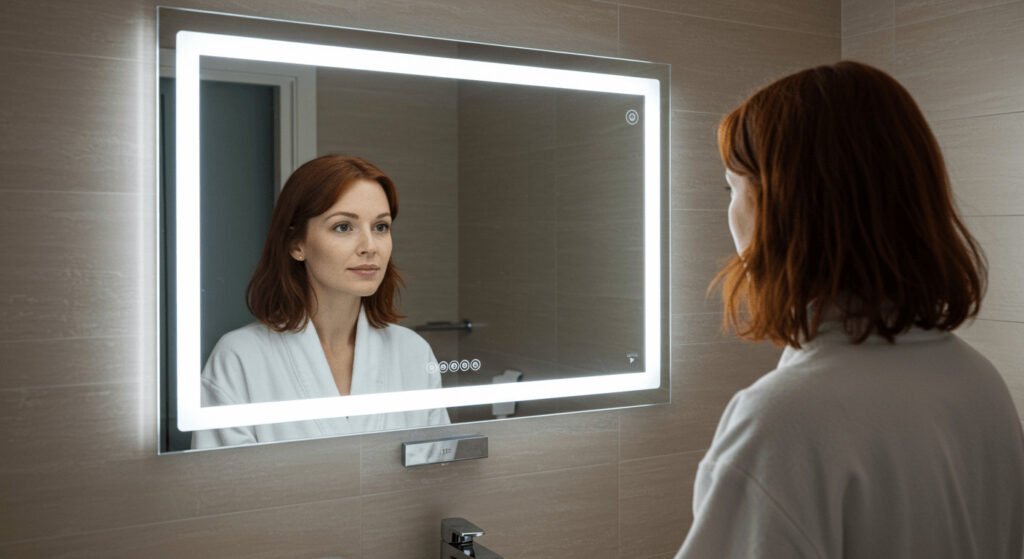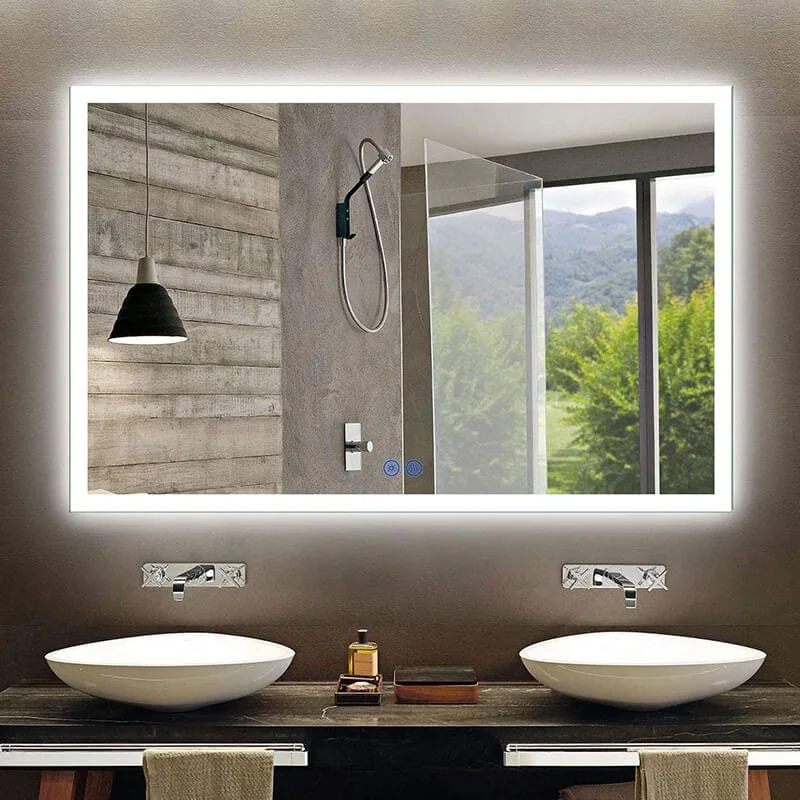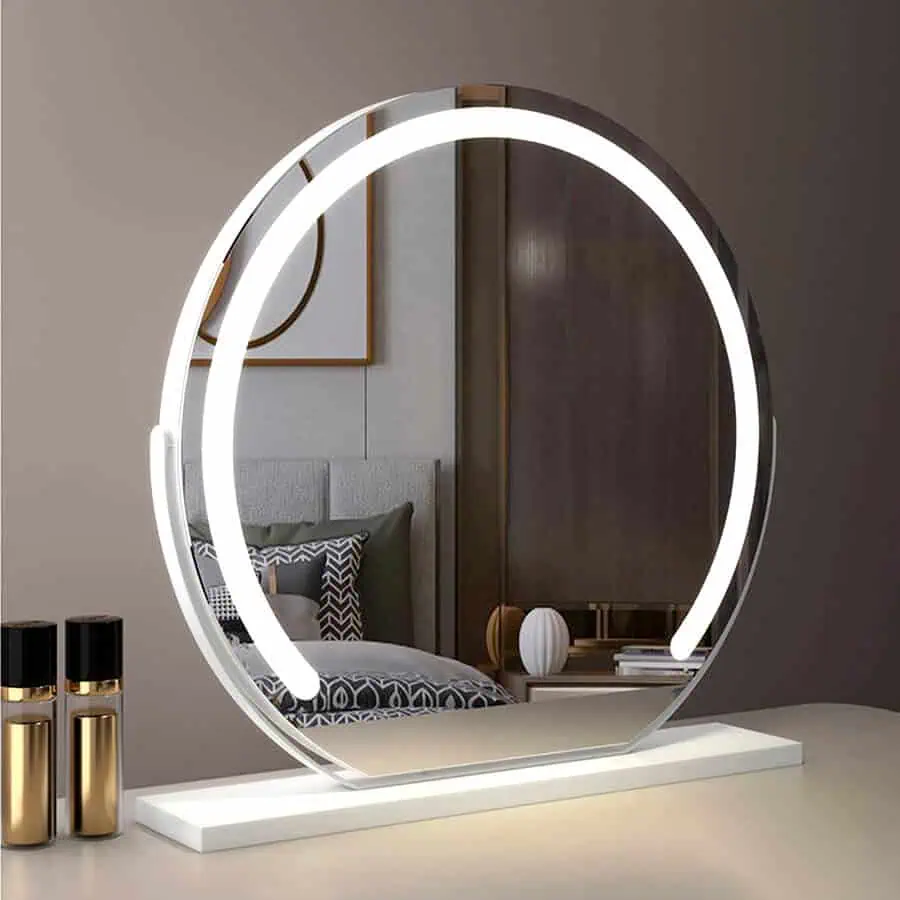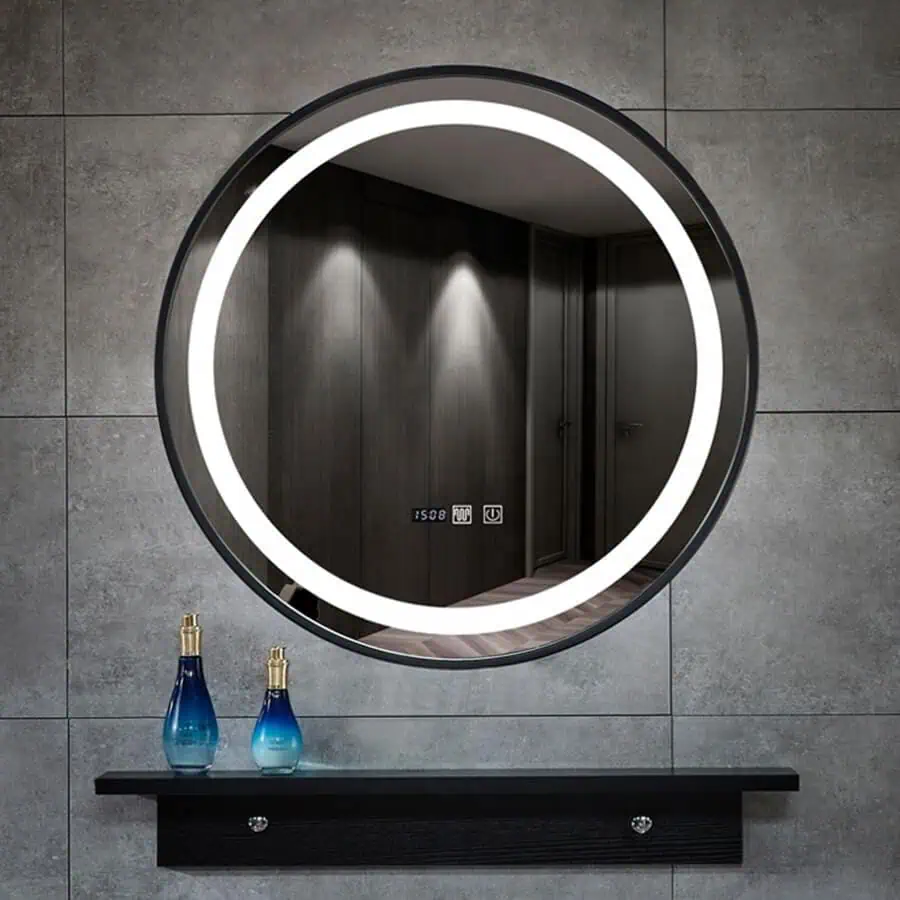Removing a bathroom mirror may be frightening, but with the right approach, it can be a simple and safe task. Let’s look at the finest techniques for removing your mirror without causing harm.
To remove a bathroom mirror, you need to identify its mounting type. If it’s glued, use a heat gun to loosen the adhesive and a plastic scraper to carefully pry it off. If mounted with clips or screws, use a screwdriver to detach the mirror. Take extra precautions if your mirror has LED lights or electrical components.
Now, let’s look at the many strategies for safely and effectively removing your bathroom mirror dependent on how it’s installed.
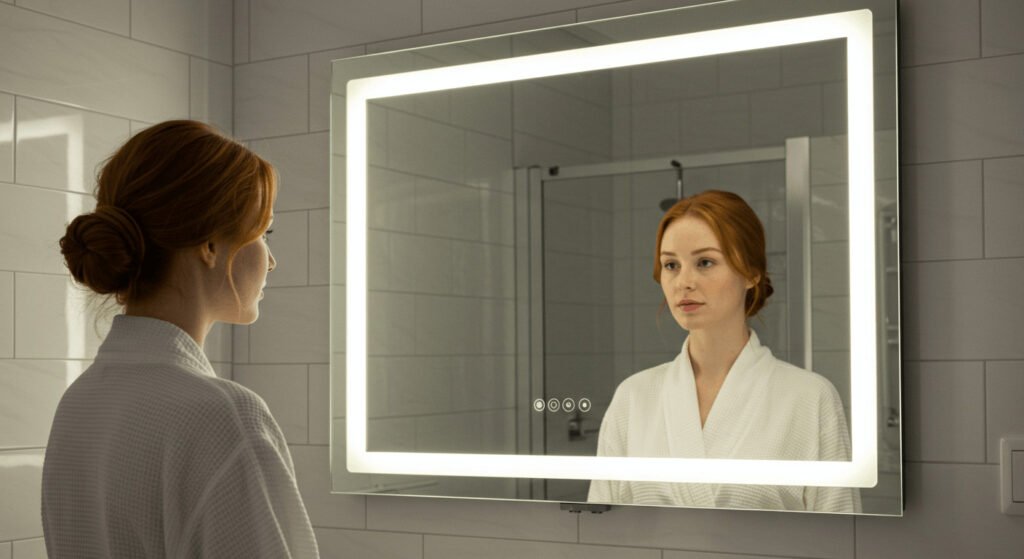
Table of Contents
ToggleHow to Remove a Bathroom Mirror That Is Glued to the Wall?
Bathroom mirrors that are bonded to the wall might be difficult to remove, particularly if you have never done so before. The adhesive might be powerful, but with the correct equipment and method, you can safely remove the mirror without causing damage to your wall or breaking the glass.
If your mirror is glued to the wall, start by using a hairdryer or heat gun to soften the adhesive. Once the glue is warm, gently insert a plastic scraper behind the mirror and slowly pry it away from the wall. Work your way around the mirror, ensuring you don’t put too much force on one side.
When dealing with LED mirrors or bathroom mirrors with lights, special precautions should be taken because the wiring may be linked to the mirror. If you are not experienced working with electrical components, unplug any power source before attempting to remove the mirror. If the glue is very resistant, a wire saw for mirror removal can be used to carefully cut through it without damaging the mirror.
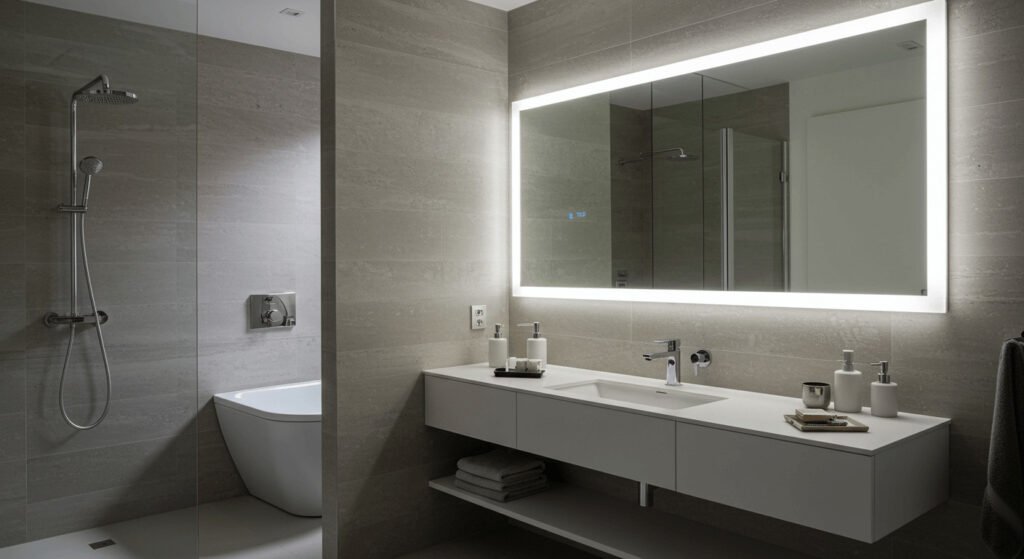
How to Remove a Bathroom Mirror with Clips?
Mirrors installed using clips are often easier to remove than those fastened to the wall. However, it is still necessary to take the proper precautions to avoid harming the mirror or the clips themselves.
To remove a mirror with clips, first identify the clips that keep the mirror in place, which are normally placed at the top or sides. Use a pry bar or a big putty knife to gently remove the mirror from the clamps. Keep a firm grip on the mirror while removing it to prevent it from dropping.
If you have a vanity mirror with lights or any mirror with integrated lighting, look for any wiring that is linked to the mirror. To avoid electrical dangers, disconnect all electrical components before attempting to remove the mirror. In addition, you may need to remove the clips and hardware before reinstalling a new bathroom mirror with lights or replace mirror with LED lights.
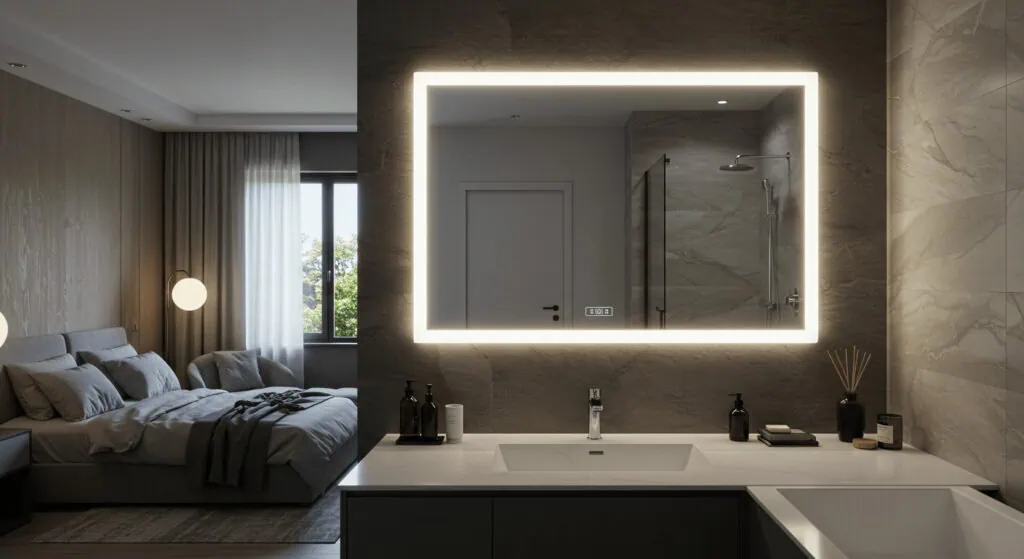
How to Remove a Bathroom Mirror Mounted with Screws?
Screwed-on mirrors are more secure than clipped mirrors, but they are still easy to remove if you have the necessary equipment. Whether your mirror is huge or tiny, this procedure guarantees a clean removal.
To remove a screw-mounted mirror, locate the screws that hold it to the wall. Use a screwdriver to loosen each fastener. If the mirror is heavy or large, have someone support it while you undo the bolts to avoid dropping it.
Many bathroom mirrors with lights or illuminated mirrors are screwed into place and may include extra electrical cables. Before unscrewing the fasteners, make sure the mirror is unplugged from any power sources, especially if it is an LED bathroom mirror with integrated lights. If your mirror is an LED mirror with lights or a magnifying mirror with lights, be careful not to damage the wiring.
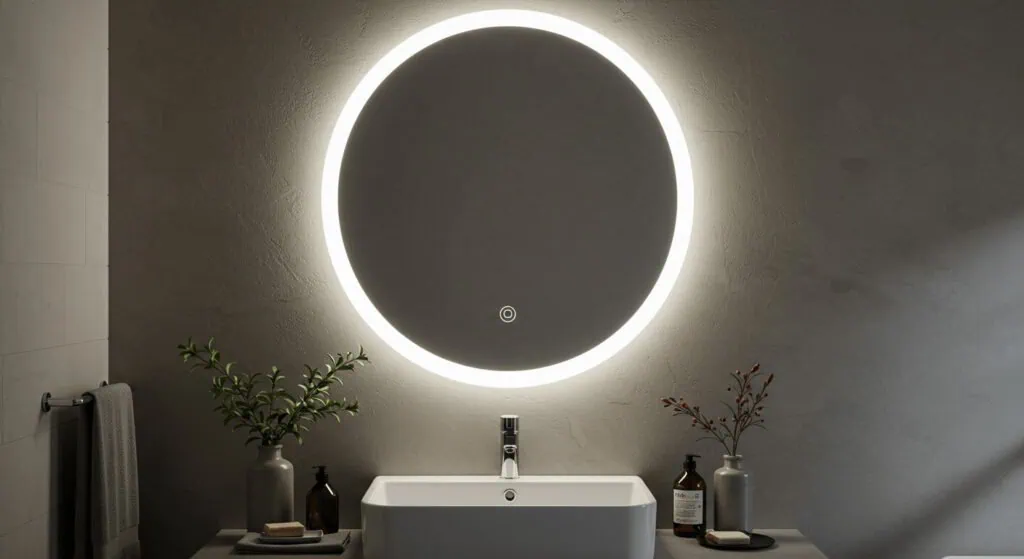
How to Remove a Bathroom Mirror Cabinet?
Mirror cabinets are more difficult to remove due to their numerous mounting points and possible electrical components. These mirrors frequently serve as both useful storage and lighting fixtures, so removal requires caution.
To remove a mirror cabinet, begin by emptying the shelves and any goods within. Use a screwdriver to dislodge the cabinet from its wall. If the mirror cabinet includes electrical components, such as lights, please sure to turn them off before beginning the removal procedure.
If your mirror cabinet has LED lighting or a Bluetooth mirror, take extra precautions with the electrical connections. Before you remove the mirror, disconnect the power source. This ensures your safety and protects the wiring, allowing you to replace a new smart bathroom mirror or lighted bathroom vanity mirror.
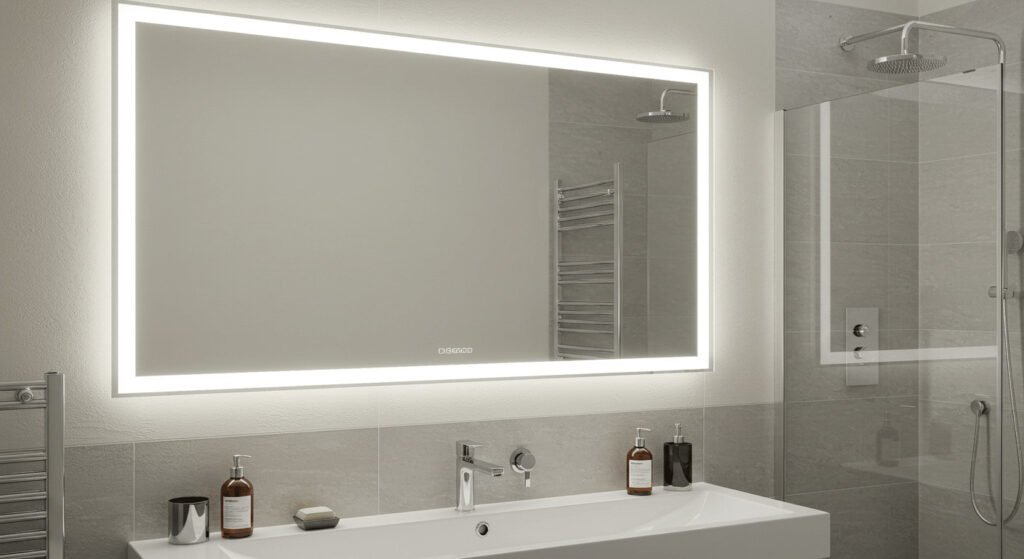
How to Safely Remove a Bathroom Mirror Without Breaking It?
The fear of shattering your bathroom mirror during removal is a prevalent one. You can remove the mirror without causing harm if you follow the necessary instructions and use the appropriate tools.
To remove a bathroom mirror without damaging it, always use a plastic scraper rather than metal equipment to prevent cracking the glass. If the mirror is attached, use heat to remove the adhesive and continue gently. Wearing gloves is also recommended to protect yourself from any fragments in the event of an unintentional breaking.
If you’re removing a large LED mirror or backlit mirror, take extra precautions because the glass is frequently more brittle owing to the lighting components. Make sure the mirror is adequately supported while being wrenched away from the wall. If the mirror is very heavy, it may be beneficial to have a second person assist with the operation to avoid mishaps.
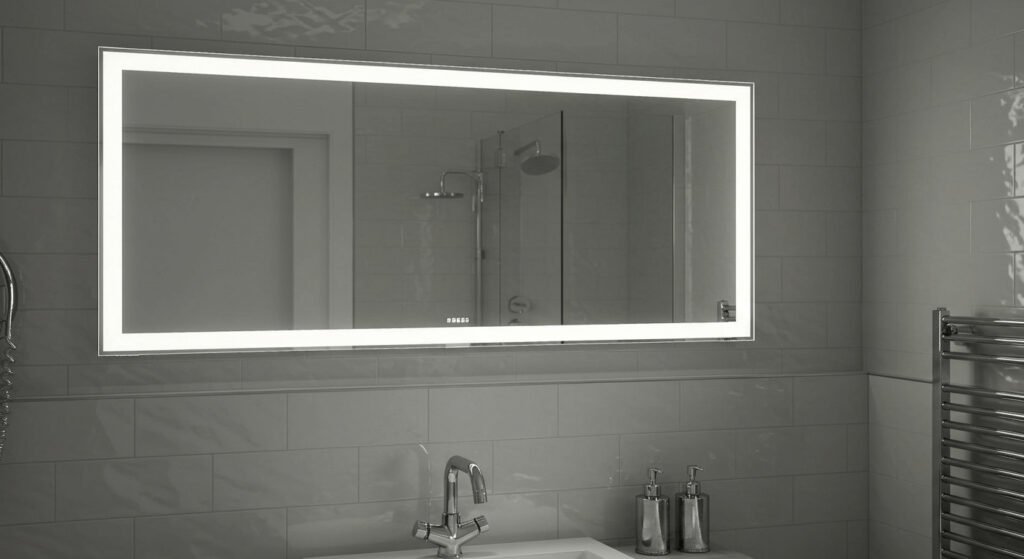
How Much Does It Cost to Remove a Bathroom Mirror?
The cost of removing a bathroom mirror depends on whether you do it yourself or employ a professional. Understanding the cost breakdown will allow you to make the best selection for your project.
Removing a bathroom mirror yourself is typically affordable, requiring only simple equipment such as a hairdryer, plastic scraper, and screwdriver. Hiring a professional service normally costs between $50 and $150, depending on the scope of the work, the size of the mirror, and whether extra services, such as disposal, are necessary.
When considering the cost of professional services, consider the difficulties of removing LED mirrors, wall mirrors with LED lights, or other mirrors with electrical components. If the mirror is enormous or has complicated wiring, engaging a wall mirror removal service may assure a safe and damage-free removal, especially if the mirror is a mirror with LED lights or backlit bathroom mirror.
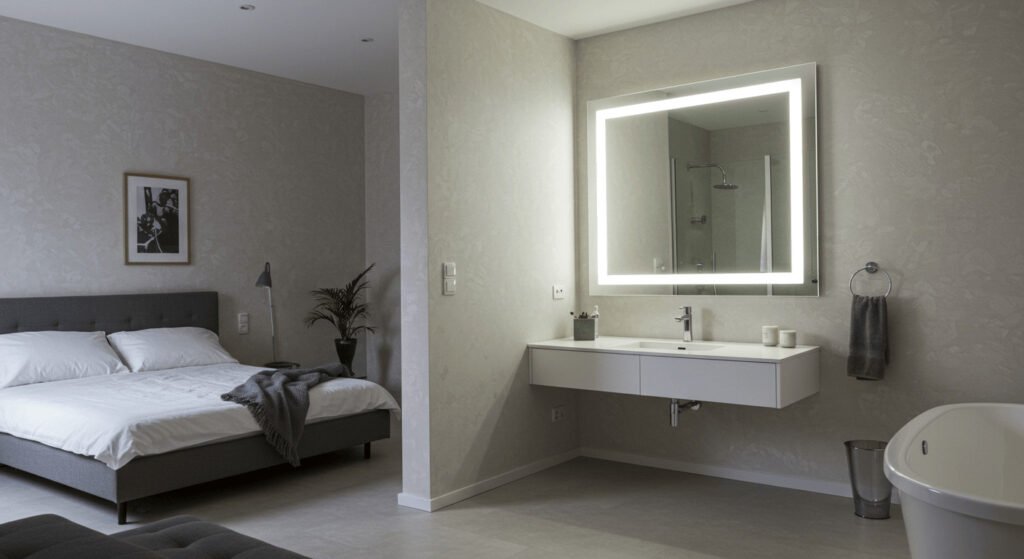
How to Take Adhesive Off a Mirror?
After removing your bathroom mirror, you will most likely be left with adhesive residue on the wall. Here’s how to efficiently remove adhesive residue without leaving unattractive scars. To remove glue off the wall, combine vinegar and water or use rubbing alcohol. Apply the solution to the residue and allow it to remain for a few minutes to soften the adhesive. Gently remove the glue with a plastic scraper, then wipe the area clean with a moist towel.
When using backlit mirrors or LED bathroom mirrors, avoid putting cleaning solution on the wires. If you’re cleaning a mirror bathroom with light or a mirror with lights, make sure to wipe off the surface gently to avoid getting moisture into electrical components.
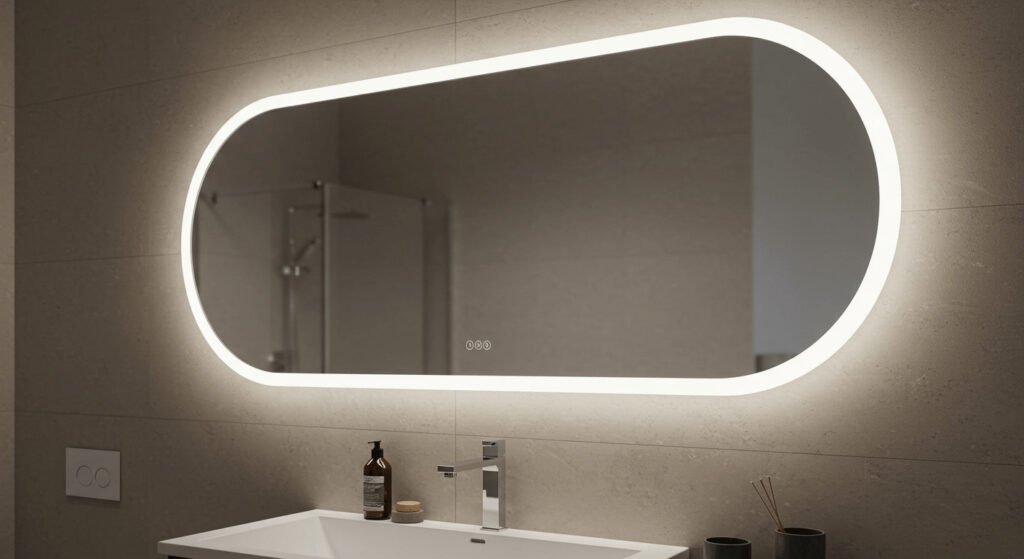
How Do You Remove a Mirror Frame?
If your bathroom mirror has a frame, you must remove it before detaching the mirror. Frames may be mounted in a variety of methods, thus knowing the mounting method will make the procedure easier. To dismantle a mirror frame, check for the screws or nails that hold it together. If the frame is attached, use a heat gun to loosen the adhesive before carefully separating it from the mirror. Take care not to harm the glass when removing the frame.
To avoid harming any lighting components, gently remove the frames from vanity mirrors with LED lights or LED light mirrors. To guarantee a clean installation, remove the frame from your present mirror before installing a new backlit mirror or magnifying mirror with light.
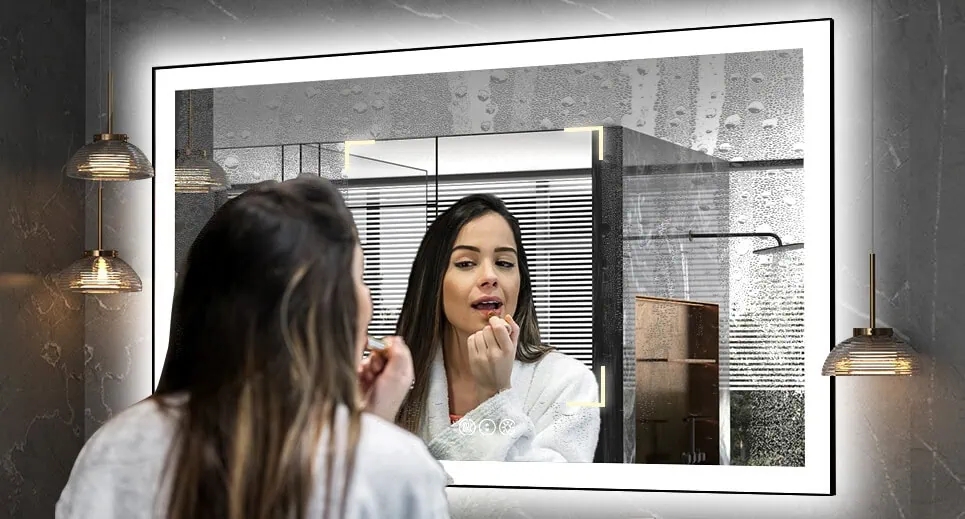
How Are Most Bathroom Mirrors Mounted?
Before attempting to remove a bathroom mirror, you must first understand how it is installed. Whether it’s fastened with clips, screws, or glue, the mounting technique influences how you approach removal. Most bathroom mirrors are attached with clips, screws, or glue. Frameless mirrors are often secured with clips, but framed mirrors are frequently held together with screws or nails. Knowing the mounting type will help you select the appropriate removal tools.
Check for any wiring that is linked to an LED mirror or a mirror with integrated lighting. Mirrors such as the round mirror with LED lights or the LED vanity mirror may require particular care to avoid damage electrical components. Always check the mirror for any mounting hardware before beginning the removal process.
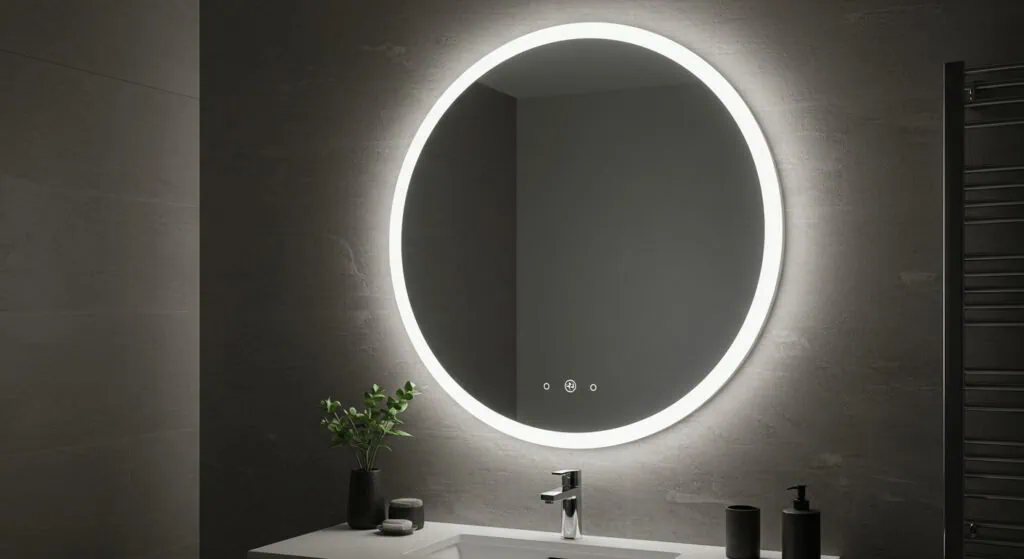
How Long Do LED Mirrors Last?
LED mirrors generally last from 30,000 to 50,000 hours, depending on component quality and use. With careful care, they may last up to 10-15 years. Regular cleaning and preventing excess moisture might help them last longer.
Are LED Mirrors Safe?
Yes, LED mirrors are safe when made to industry standards. They are outfitted with low-voltage LED lights, which are energy-efficient and produce less heat. To assure safety, however, careful installation, avoidance of moisture exposure, and the use of authorized items are required.
Summary
Removing a bathroom mirror might be straightforward if you understand how it is mounted. Whether glued, clipped, or screwed, use the proper methods for a safe and effective removal, especially for mirrors with lights.

